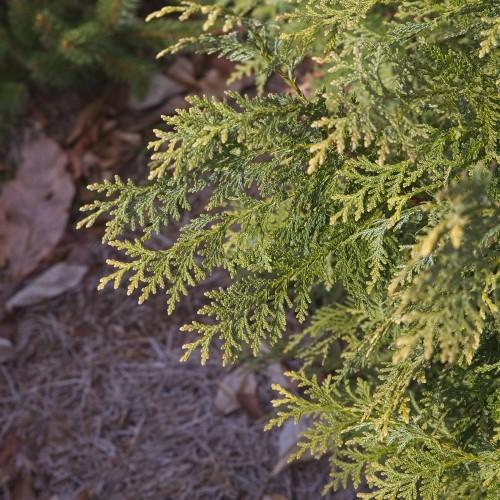
Korean arborvitae
Thuja koraiensis
Cycle:
Perennial
Watering:
Average
Hardiness Zone:
5 - 8
Flowers:
Flowers
Sun:
Full sun,part shade
Cones:
Yes
Growth Rate:
Low
Maintenance:
Low
Drought Tolerant:
Yes
Care Level:
Low
watering
Korean arborvitae (Thuja koraiensis) requires frequent but light irrigation. Water the plants deeply and thoroughly 1-2 times a week, allowing the soil to dry out slightly between waterings. This species is prone to root rot if left in overly wet soil. If the soil becomes extremely dry, water even more frequently to keep it evenly moist. Ensure adequate drainage around the plant as well, as it will not tolerate wet soils. For best results, use water that is at room temperature and avoid letting it sit in the soil for too long.
sunlight
Korean arborvitae needs at least 6 hours of direct sunlight every day in order to thrive. When growing in USDA hardiness zones 5 to 8, the plant should receive full sun in the morning and afternoon, or morning sun and afternoon shade for the best foliage growth. In hotter climates, such as USDA hardiness zones 9 to 10, full sun in the morning and afternoon, or partial sun—about 4 or 5 hours of sunlight a day—may be better. In areas with very intense sunlight, the tree should be shaded part of the day with a light cloth or shade cloth. It is important to remember that too much shade can cause the foliage to turn yellow or brown.
pruning
Korean arborvitae (Thuja koraiensis) should be pruned in late winter or early spring. Pruning should be minimal, focusing on removing any dead, broken, or diseased branches. You can also selectively prune branches to shape the plant or reduce size. Be careful not to over prune as the plant can become leggy and won't grow new foliage. Never prune more than 1-third of the total plant at 1 time.
